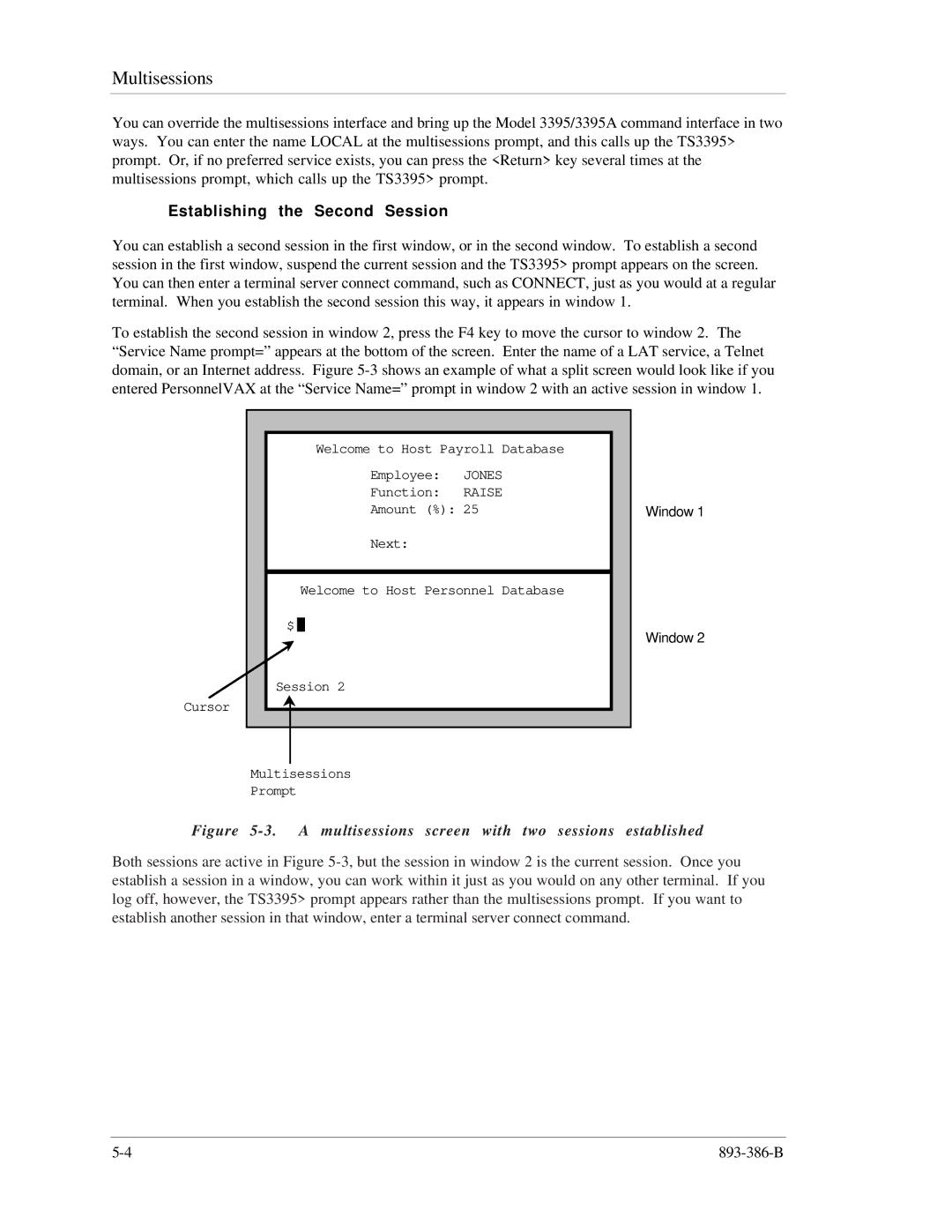
Multisessions
You can override the multisessions interface and bring up the Model 3395/3395A command interface in two ways. You can enter the name LOCAL at the multisessions prompt, and this calls up the TS3395> prompt. Or, if no preferred service exists, you can press the <Return> key several times at the multisessions prompt, which calls up the TS3395> prompt.
Establishing the Second Session
You can establish a second session in the first window, or in the second window. To establish a second session in the first window, suspend the current session and the TS3395> prompt appears on the screen. You can then enter a terminal server connect command, such as CONNECT, just as you would at a regular terminal. When you establish the second session this way, it appears in window 1.
To establish the second session in window 2, press the F4 key to move the cursor to window 2. The “Service Name prompt=” appears at the bottom of the screen. Enter the name of a LAT service, a Telnet domain, or an Internet address. Figure
Cursor
Welcome to Host Payroll Database
Employee: JONES
Function: RAISE
Amount (%): 25
Next:
Welcome to Host Personnel Database
$ ![]()
Session 2
Multisessions
Prompt
Window 1
Window 2
Figure 5-3. A multisessions screen with two sessions established
Both sessions are active in Figure
